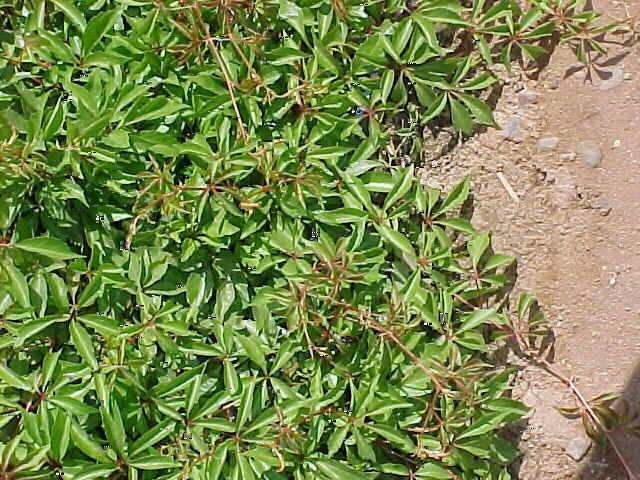| Botanical Name: Parthenocissus 'Hacienda Creeper' | |
| Common Name: Hacienda Creeper |

-
Anatomy
-
Culture
-
Design
Plant Type
Ground cover, Vine
Height Range
25-40'
Flower Color
n/a
Flower Season
n/a
Leaf Color
Green, Dark Green, Red
Bark Color
n/a
Fruit Color
n/a
Fruit Season
n/a
Sun
Full, Half, Shade
Water
Medium
Growth Rate
Fast
Soil Type
Sandy, Clay, Loam, Rocky, Unparticular
Soil Condition
Average, Rich, Poor, Well-drained, Dry
Soil pH
Neutral, Basic
Adverse Factors
Invasive
Design Styles
English Cottage, Mediterranean, Ranch, Spanish, Native Garden
Accenting Features
Espalier, Unusual Foliage
Seasonal Interest
Summer, Fall
Location Uses
Background, Raised Planter, Walls / Fences
Special Uses
Screen, Mass Planting, Naturalizing
Attracts Wildlife
n/a
Information by: Stephanie Duer
Photographer: Mountain States Nursery
Photographer: Mountain States Nursery
-
Description
-
Notes
This vine resembles Virginia Creeper, but it is smaller and slower growing. Bright green, five-petaled palmate leaves glossy, and turn red in the fall. In mild climates, it would hold its leaves, but here it will probably lose them. It is twining, tendrilling, and clinging, but if left with no support, it will cover the ground rather thoroughly. Listed as being hardy to USDA Zone 7, but also as being hardy to -10 degrees. I don't know of anyone growing it here, but it is slower than P. quinquefolia, so it may be worth a try.
Like other vines in this genus, Hacienda Creeper is indifferent to soil type, as long as it is well drained. Grows in sun to shade, and will grow until it runs out of space or you cut it back. It was found by Scott Ogden in an old hacienda in Mexico. Hardy to -10 F.